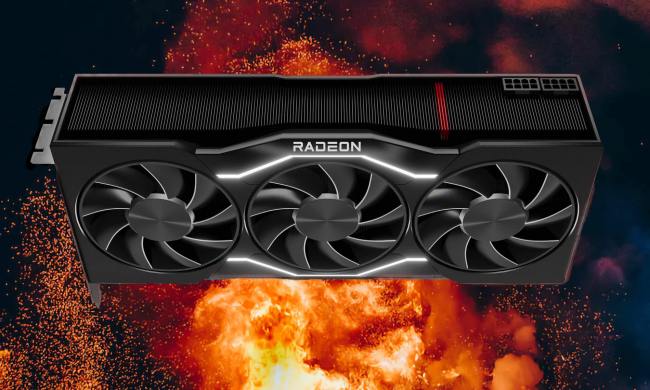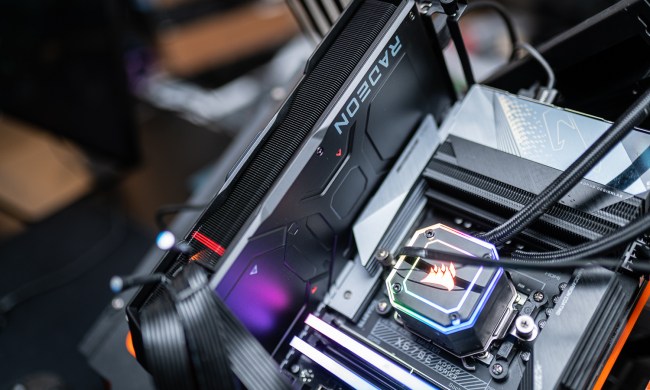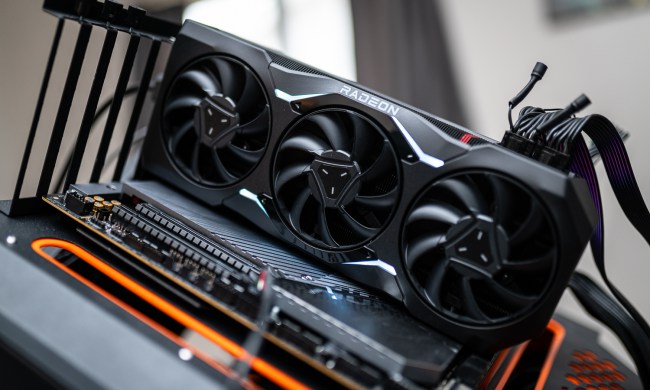Ever since AMD took the budget GPU world by storm with the RX 480, users have been wondering when the red team would make a move on the higher-end graphics market. With gamers drooling for a card based on the new Vega architecture, AMD is ready to deliver with the Radeon Vega 56 and 64. It also plans to hit the workstation market with two new Radeon Pro WX cards, one of which is packed with two terabytes of memory.
We learned a lot about the Vega architecture at CES 2017, and our post from that event lays out a lot of the new additions and improvements. With that said, let’s dig into what’s new.
Vega finally arrives for gamers
The Radeon Vega 64, as its name implies, is powered by a set of 64 Next-Gen Compute Units, with a total of 4,096 Stream Processors. It has a 1,247MHz base clock, and 1,546MHz boost clock, resulting in a peak performance 12.66 Teraflops, over twice the RX 580. Paired up with 8GB of High Bandwidth Memory 2 (HBM2), and boasting 484GB/s of memory bandwidth, the Radeon Vega 64 represents a huge leap in potential performance, but comes in at a surprisingly reasonable $500. That’s for the air-cooled variant.
If that’s still a bit too rich for your blood, the Radeon Vega 56 may be a better fit. It cuts the number of Next-Gen Compute Units down to just 56, which also shaves $100 off the price, for a very competitive $400 price point. Despite that, it still offers up 10.5 TFlops of potential performance.

The positioning or AMD’s new Vega hardware lends some credibility to rumors that Vega cards will not beat the performance of Nvidia’s GTX 1080 Ti. That card sells for about $700, so if Vega did beat the GTX 1080 Ti, it would do so at a discount that’s perhaps too good to be true.
Instead, it appears that the new Vega cards will be setting the GTX 1080 and 1070 in their sights. While perhaps not as exciting on paper, a win for AMD against those cards would be huge. The GTX 1070, in particular, is a top seller for Nvidia, and AMD has struggled to find an answer for it.
A little bit of Nano
While AMD provided briefings of most the Vega hardware, it did hold one thing back as a surprise — the Vega Nano. The company gave the first of these cards to Tim Sweeney, founder of Epic Games.

While we still don’t have official specifications on the card, which is roughly half the size of other Vega entries, it’s likely to be a slightly under-clocked version of Vega that will compete at a slightly lower price point, and target small form-factor desktops. AMD took a similar tact with the Radeon Fury Nano.
A bundle of joy
Not content to just sell the cards on their own, AMD is willing to sweeten the pot for anyone looking to build a new system in the red team’s ecosystem. Radeon bundles include a Radeon Vega GPU, $200 off the Samsung CF791, an ultra-wide 3,440 x 1,440 monitor with FreeSync, as well as $100 off a Ryzen 7 CPU and motherboard bundle. It even comes with two free games — Prey and Wolfenstein II: The New Colossus — at least in the North American market.
There’s a Radeon Vega 56 bundle at $500, a Vega 64 bundle at $600, and a Vega 64 liquid-cooled bundle for $700. AMD says a bundle deal will be the only way to buy a liquid-cooled Vega 64 at launch.

Gamers who go for a bundle will receive the discounts at the time of purchase, and can choose not to buy the Ryzen bundle and Samsung monitor if they’d just like the free games. AMD is not issuing coupons that will be valid at a later date, or requiring mail-in rebates.
While the bundles are no doubt meant to help move AMD-friendly hardware, we suspect they’re also meant to ward off cryptocurrency miners, who will be eager to suck up Vega hardware. While a gamer will see benefit from a sleek new Samsung CF791 — which won our Editor’s Choice award — miners will have no use for it.
The professional
Vega 64 and 56 weren’t the only hardware AMD brought to LA for the 2017 Capsaicin Siggraph event. It gave details on two other new cards, built on the Vega 10 architecture, that expand the WX workstation GPU series into new areas.
The first, the WX 9100, packs in a whopping 12.3 TFlops of peak performance, although we don’t know much else about what’s under the hood, yet. What we do know is that the card packs in 16GB of HBM with error correction, an important feature for those looking to use the GPU for computational work.
The other Radeon Pro card, the WX SSG, is the exact same setup as the WX 9100, with the added bonus of 2TB of solid state storage onboard. It sports an 8GBps read speed, and 6GBps write speed, both numbers that are absolutely insane. That configuration provides some interesting benefits. Importantly, it allows content creators to work with and edit 8K video in real time. Adobe has adopted the SSG API already, so Premiere Pro users can benefit from the Radeon WX SSG as soon as it hits the market.
When that will be, however, is still unclear. AMD hasn’t provided any details on availability or price yet, but may share the details during the Capsaicin Siggraph keynote. We’ll update this post as the Radeon team fills in the blanks.
There’s new software too
The Ryzen CPU and RX series GPUs introduced a wide swath of new software features, which we’re already big fans of. Radeon Wattman in particular made overclocking your system’s CPU and GPU dead simple, and you can even adjust a number of settings, like clock speed and voltage, without even rebooting the computer.
It goes beyond just tweaking and tuning, however, as Radeon has already rolled out a number of features in the previous weeks that improve both the development and consumption of GPU-reliant software.
You can read about the latest consumer driver update , and catch the latest professional driver update here.
When can you buy it?
AMD says Vega will be on shelves starting August 14.



